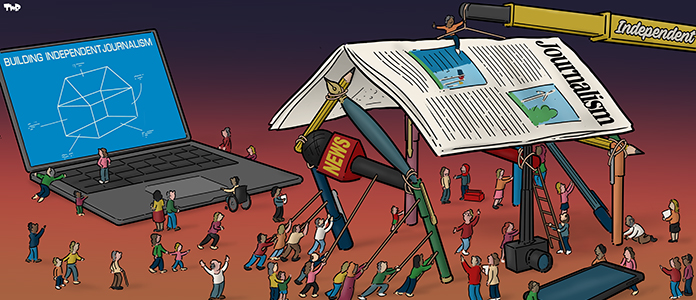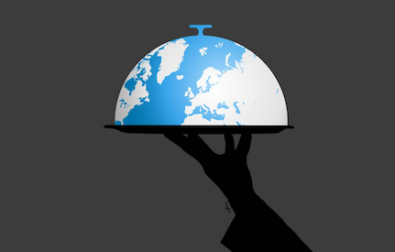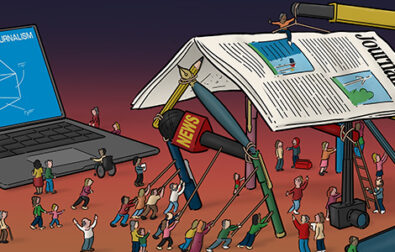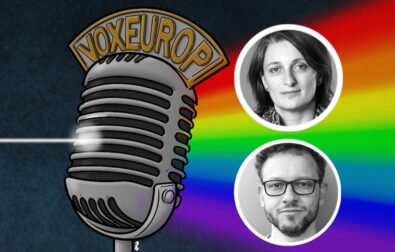When we talk about a European Army what exactly do we mean? A single or common EU army? An intergovernmental army, or an army under the command of European institutions? An army that is composed of national contingents or an army made of European soldiers? Depending on the answer to these questions, the scenarios that emerge are very diverse, whether it be an (improbable) configuration of 27 States, or a model that combines few select Member States by way of Permanent Structured Cooperation.
A single, intergovernmental European army
This would be a more or less organic alliance among all or some of the national armies of the Member States, a sort of second version of the European Defense Community (EDC) where authority would remain in the hands of the states themselves. In this updated scenario, the whole of each national army would pass under an intergovernmental European authority yet still remain under its own country’s authority for all practical purposes (decision-making power, organization and budget on the one hand, and veto power at the level of European intergovernmental institutions). Integration would be limited, which is to say, non-existent.
Moreover, it is easy to imagine several States, particularly the “smallest” ones, that are not about to give up a bird in hand (NATO with all that it means in terms of a guarantee of security – Article 5, the deterrent of a powerful backer that the US’s presence guarantees, the strength of the regular American army, and so on) for two in the bush, a single European army that would basically be at the service of the old-school alliances.
A single, joint European army
According to this scenario, national armies would be incorporated into a larger European army placed under the authority of common European institutions: the European Commission, the European Council, the European Parliament, and, for the authority to intervene, the European Council of the Heads of State and Government meeting as the European High Security Council. The finished product would be a decidedly more European army.
But this scenario is not without its own particularly problematic issues. To begin with, it presupposes being able to join national armies whose traditions, modes of organization and engagement are often very different, especially when we are not able to count on the power or harmonizing support of the United States, as is the case with NATO. It also implies managing, on the one hand, the great tension between a common European decision-making structure and, on the other, the means (the armies themselves) that continue to take their orders from their respective Member States. Moreover, it requires immediately dealing with the delicate question of the political and military structuring between France’s deterrent ability and the common army, as well as the question of the security and defense of overseas territories that are not part of the European Union.
Some of the EU’s recent decisions, such as preparing for the creation of a European “general staff”, or of a fund for military research, stem from this scenario to the extent that they are part of a common framework. But the speed with which these types of initiatives are being put into place suggests that the development of a European army will be indefinitely postponed.
A common and intergovernmental European army
Unlike the two previous scenarios, this “European” army would be made up of segments of national armies rather than the armies in their entirety. The recent proposal of creating European “Battle groups” is part of this idea, whose two main drawbacks are that it is subject to changes in the governing majority in the relevant Member countries, and that it opens itself to the risk of threats of blackmail in times of intervention. As numerous experiences of armed intervention in recent history show (Bosnia, Rwanda, Iraq, Afghanistan, etc.), it is extremely easy (through hostage taking or suicide bombs) to put pressure on countries participating in an international initiative (here, a European one) to get them to withdraw their contingent.
Moreover, rather than attenuate them, this type of army would intensify national rivalries with regard to questions of command and, more importantly, the choice of arms, which is currently in the hands of national industries.
The different experiences of incorporating armies with respect to security and defense over the last twenty or thirty years also fall into this category: Eurocorps and the Franco-German Brigade, among others. The operational deployment of these armies has been virtually non-existent, precisely because each of the different members in question maintains its national affiliations. Lastly, and though it carries more of an imperial than a European connotation, Germany’s policy of incorporating the Dutch, Romanian, Czech, and shortly even Finnish and Swedish brigades into the Bundeswehr must be seen in the same light.
A joint and common European army
Unlike a single, joint European Army, the joint, common European army we are proposing would set itself apart from national armies. Placed under the exclusive authority of European institutions (the Commission, the Council, the European Parliament and High European Council on Security made up of the heads of state and government of the participating Member States), this army would be made up of European officers and soldiers. In other words, this army would be created from scratch.
Curiously, this option is the one that is least often discussed, and when it does come up, it is the one that is eliminated from consideration the fastest and with the greatest casualness, which is precisely the reason that we will develop it most thoroughly here. What truths are used to denigrate this option? For its detractors, the absence of legitimacy of the European political institutions called upon to make decisions of life and death is a deal-breaker by itself.
Which is no less surprising in an institutional configuration where all decisions concerning engagement proposed by the President of the Commission would be ratified by the majority of the High European Council on Security made up of the heads of state and government, which, moreover would adopt its decisions based on a qualified majority. Another concern that is mentioned is the mammoth task involved in creating a new army out of nothing. This argument dismisses the expertise of the soldiers from different national armies, as well as two recent experiences: the creation of the Croatian army in 1991, and more recently, the creation of the Ukrainian army almost entirely from scratch.
The last objection is the intrinsic impossibility of being able to count on European patriotism, i.e. the soldiers’ and officers’ willingness to engage in combat as Europeans and no longer as citizens of this or that Member country. This argument is not the less surprising given that we know that the majority of several of the most prestigious units (and the ones most often used in external theaters of operation) of some Member States are made up of citizens from other countries.
Nor is it less surprising when we recall all of the foreign soldiers who made up the majority of the troops who liberated Western Europe in 1944. And still more forgotten by history are the tens of thousands of North Africans and Africans who died in Europe during the First and Second World Wars. This argument is all the more astonishing when we consider that the history of the construction of Europe has shown that the national “neutrality” of civil servants of the European Commission has, by and large, been a success, as was the neutrality of the Judges of the Court of Justice in Luxembourg, for instance.
Lastly, a definitive argument: the lack of financial means in a Europe plunged in economic crisis. But unless we are beginning with the assumption that the only factors we need to consider are the ones that threaten our “internal” cohesion, whether economic or social, and unless we’re also considering that these have no relation to external factors, it is imperative to examine the real ability of each of the Member States of the Union as a whole to respond to outside threats at the moment. And while not all of Russia’s vengeful encroachments up to our borders are military in nature – quite the contrary – they still rely on the threat of military action to call into question the borders of European States (Georgia, Moldavia, Ukraine).
Moreover, the weakness – we might even say decay – of States in close proximity to Europe (Iraq, Syria, Libya, Mali, etc.) and the rise of terrorist elements that precede, accompany or result from them, combined with the United States’ growing isolationist stance all put into radically new focus the question of the security and defense of the Union.
Already at the Cardiff Summit in 2014 and in response to this new situation, the Member countries of NATO put forth the objective of devoting 2 percent of their GDP to defense by the year 2024.
European defense and German rearmament
Like the other member countries of NATO, Germany has pledged to devote 2 percent of its GDP to defense. Although this promise has no legal status, it was entered into before and with the other members of NATO, which confers a strong political meaning upon it. Concretely, it means that German military expenditures could reach upwards of 62 billion euros in 2024.
France, which, according to SIPRI, already devotes 2.2 percent of its GDP to the military, could see its own military costs rise to 50 billion euros by the same time, with 3.5 billion set aside for nuclear deterrents and 2.5 billion to updating these deterrents. In other words, 44 billion would remain for its conventional forces. Similarly, Italian and Spanish military costs would likely rise to 34 and 22 billion euros, respectively, in 2024.
These numbers are a much stronger argument than any lengthy discourse, and they are not the only ones striving to foretell the future. The Bundeswehr policy of incorporating large portions of the national armies of other Member States, a policy that is necessarily imperial and intentionally mercantile, does in fact have strong implications on the choice of weapons of these “incorporated” armies. Moreover, it is a source of significant benefits to the German defense industry, which some already consider the dominant defense industry in Europe.
“The only European army is the French army”
While France unquestionably boasts the most effective army among the 27 European nations, enjoying the highest level of autonomy, this does not in any way make its army one that can single-handedly counter the threats that Europe currently faces. This was amply demonstrated by France and Britain’s muddled intervention in Libya, which required NATO assistance, as well as by the sad fiasco of the aborted mission in Syria following the American president’s about-face and France’s “retreat”. Or, in more prosaic terms, a part-time air and sea force, and a deficit in satellite information are here to remind us that simply being better than all the others does not mean being up to the task.
But unless we are prepared to have certain Member States make the decisions while others pay, this still does not make of the French army a European army – far from it. No more than the Deutschmark could be the basis for the euro. Which it is not, as can be seen by the functioning of the Council of Governors of the European Central Bank, where Germany is more often than not in the opposition. A European army cannot be a national army, nor a derivative of one of them.
Last but not least, France faces strategic choices on a tight timeline that presages no-win budgetary decisions: modernizing nuclear deterrents, building a second aircraft carrier, investing in cyber-warfare, developing and building the successor to the Rafale... only to name a few of the sectors where significant investment will or would be necessary.
A priceless army
Taking into account General Perruche's indispensable white paper on European defense, and thus also the deployment of the varied skills in the domain of security and defense of the twenty-seven nations of the EU, and based on the principal threats mentioned above, we can envision what the first core of a common army would look like: three rapid intervention divisions (consisting of 45,000 soldiers) based in the Baltic region, Slovakia and Romania; three air and sea groups based in the Baltic region, Greece and Portugal; a military information service with strong satellite capabilities; a service dedicated to cyber-warfare; and all of this with a budget equivalent to 0.3 percent of the GDP, or some 30 billion euros, which is more or less what the Financial Transaction Tax brings in.
The undeniable advantages of a joint, common European army
The first, and indisputable, merit of this army is that its mere presence would contribute to the cohesion of a European construct in dire need of cohesion. Through the institutional process that it would be a part of, it would represent an opportunity and means of creating a space for building trust among Member States in an area rife with suspicion, mistrust, long-standing rivalries and consolidated national interests.
Without impinging upon NATO membership, the mere existence of this army would bolster our defense against our great neighbor to the East, while also reassuring the countries in the European Union that share Russia’s borders. This army “would help to establish a foreign policy and policy of common security”, as the EU Commission Jean-Claude Juncker said, and as a result, to regain footing in the “hot” areas where we currently play – in the most charitable terms – a minor role (Syria, Iraq, the Gulf States, etc.).
This army would contribute to the emergence of a generally self-sufficient European arms market, and as a result, a more integrated European defense industry, which is a source of considerable savings, as the European parliament pointed out in 2015. By so doing, it would allow us, as General de Gaulle recommended, to eventually marry foreign policy to arms sales, and no longer base foreign policy on the possible sale of arms, which is currently so often the case.
It would make it possible for us to protect military and technological expertise, especially in the areas of most conspicuous expense (satellites, air and sea forces, IT, aeronautics, etc.). It would provide – only partially, of course – an answer to the thorny question of the European budget, boosting it by 30 percent.
It would represent the beginnings of a response to the feeling of powerlessness instilled in European citizens by decades of inability to respond politically and in good time to the crises, wars and genocides perpetrated only a short distance from Europe – in Yugoslavia, Rwanda, Chechnya, and now Ukraine, Syria and Iraq.
Therefore, unlike the many initiatives that make sense only to experts, and like the euro that, despite all the defects of its conception, continues to be approved by the citizens of Europe, a joint, common European army would represent a tangible realization whose usefulness they can concretely measure and that they could make their own.
Do you like our work?
Help multilingual European journalism to thrive, without ads or paywalls. Your one-off or regular support will keep our newsroom independent. Thank you!
















